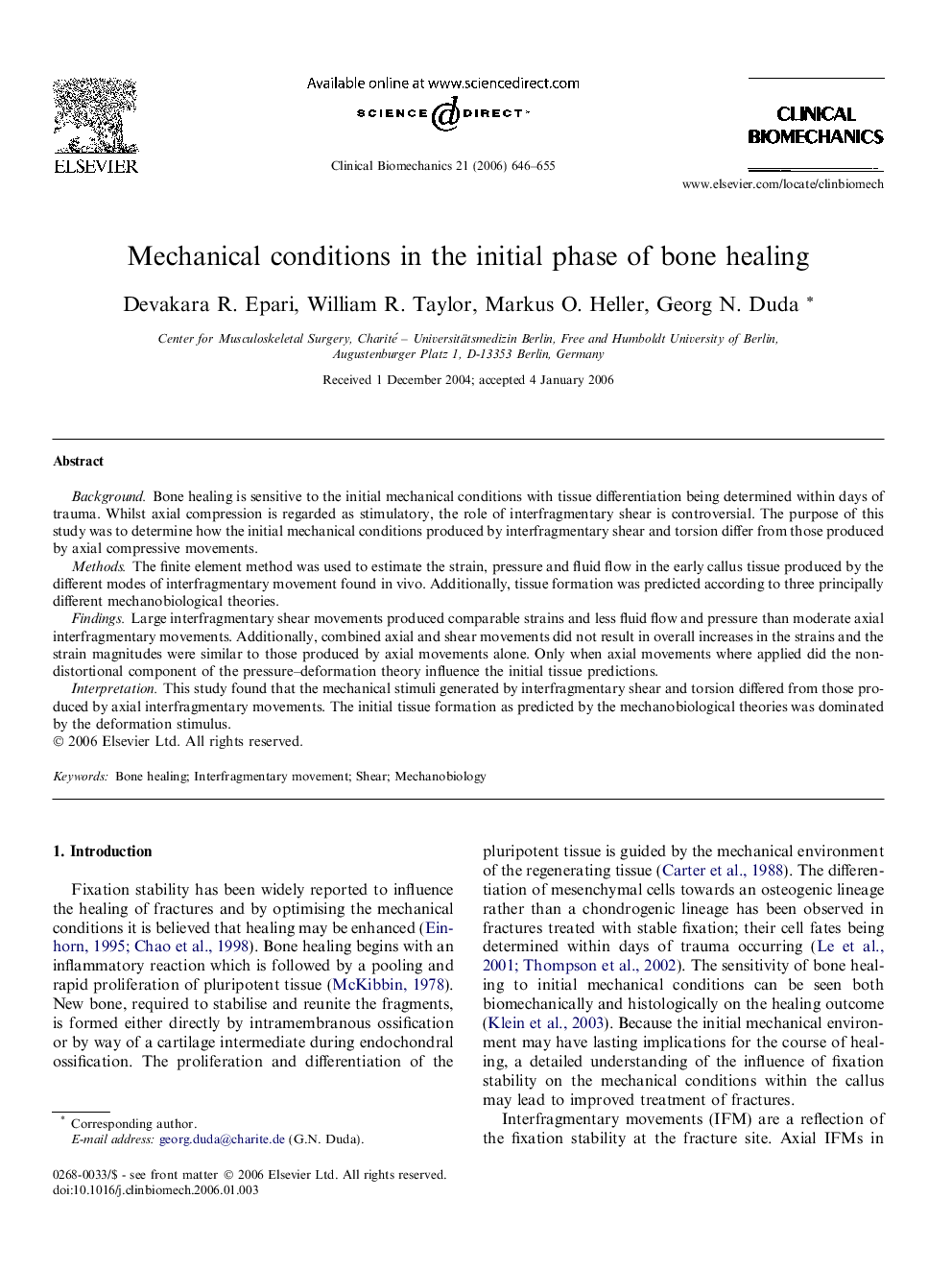| Article ID | Journal | Published Year | Pages | File Type |
|---|---|---|---|---|
| 4051572 | Clinical Biomechanics | 2006 | 10 Pages |
BackgroundBone healing is sensitive to the initial mechanical conditions with tissue differentiation being determined within days of trauma. Whilst axial compression is regarded as stimulatory, the role of interfragmentary shear is controversial. The purpose of this study was to determine how the initial mechanical conditions produced by interfragmentary shear and torsion differ from those produced by axial compressive movements.MethodsThe finite element method was used to estimate the strain, pressure and fluid flow in the early callus tissue produced by the different modes of interfragmentary movement found in vivo. Additionally, tissue formation was predicted according to three principally different mechanobiological theories.FindingsLarge interfragmentary shear movements produced comparable strains and less fluid flow and pressure than moderate axial interfragmentary movements. Additionally, combined axial and shear movements did not result in overall increases in the strains and the strain magnitudes were similar to those produced by axial movements alone. Only when axial movements where applied did the non-distortional component of the pressure–deformation theory influence the initial tissue predictions.InterpretationThis study found that the mechanical stimuli generated by interfragmentary shear and torsion differed from those produced by axial interfragmentary movements. The initial tissue formation as predicted by the mechanobiological theories was dominated by the deformation stimulus.
